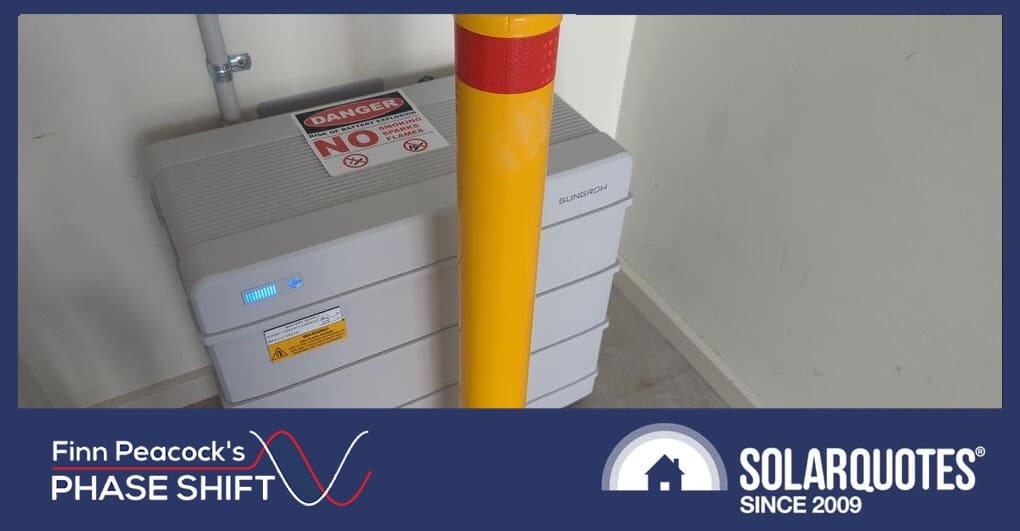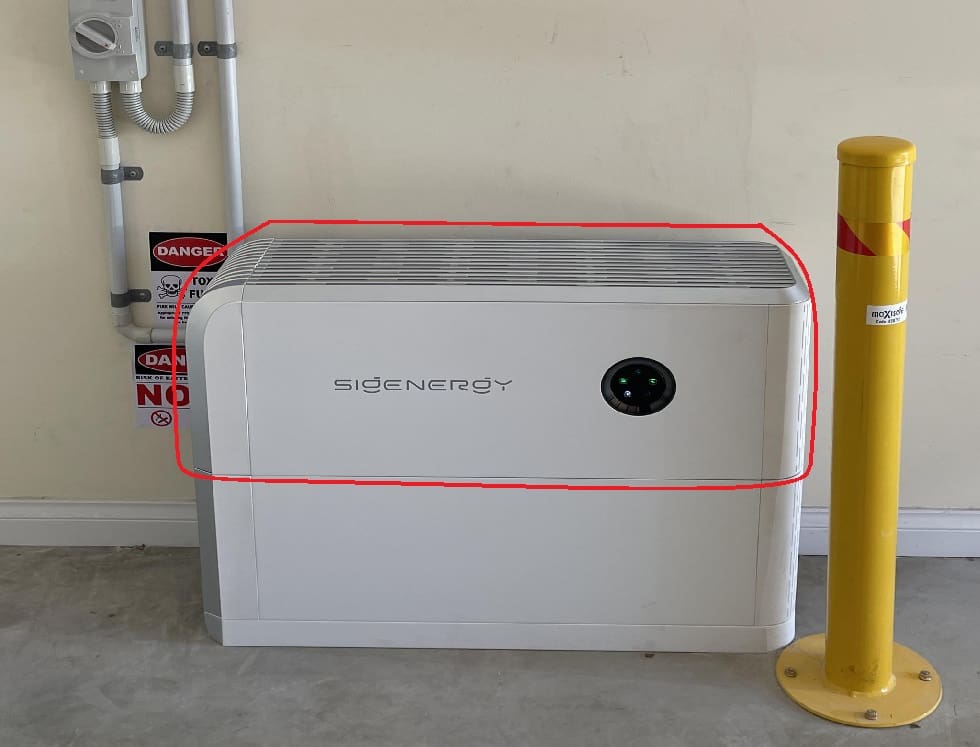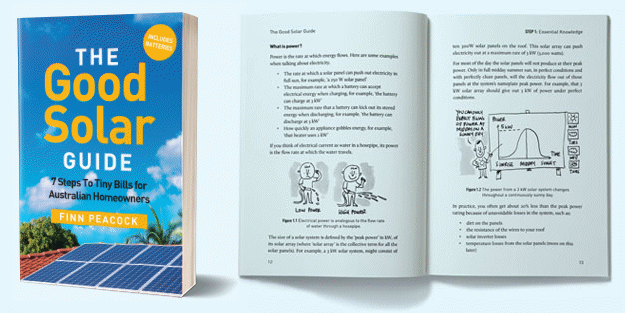
The Australian federal election is creeping up, and if history is any guide, Labor and the Coalition will be battling it out with policy sweeteners. One of the likely big-ticket items? Battery rebates. It’s a safe bet that, in a bid to win votes, both sides will throw money at home batteries (just like WA Labor is in today’s state election).
That’s great, except for one thing.
If you’re thinking about a battery, you’re probably considering waiting. Why spend thousands now when a rebate could be announced in a few months? That’s a rational decision – except that ‘a few months’ could easily turn into a year or more before anything concrete is in place. If it happens at all.
Meanwhile, your electricity bills are higher than they need to be, and you’re still relying on the grid when you’d rather be using your own solar power.

Solar Citizens has been campaigning since Christmas for a federal home battery rebate, but nothing has been announced to date.
The Smarter Move
If you want a battery but are holding out for government handouts, there’s a way to have your cake and eat it too: buy solar now, but with a hybrid inverter.
Why?
- Immediate savings. Extra solar reduces your power bills immediately, so you won’t burn cash while waiting for a rebate that may or may not arrive.
- Any federal rebate is likely at least a year away. That gives your installer four seasons of your real-world solar and consumption data to size your battery for what matters most to you, whether it’s fast payback, zero bills, or apocalypse-proof backup.
- Faster battery install later – a good hybrid inverter means your installer can come back and add a battery in an hour or two, rather than spending a day or two installing the full solar and battery system.
- Better deals and faster service now – the industry is quieter now than it will be if rebates trigger a buying frenzy. That means better pricing, faster installation, and less chance of being stuck on a waitlist when everyone rushes to cash in on a new scheme.
The Best Tech for the Job
Not all hybrid systems are created equal, but – in my opinion – Sigenergy’s setup is the best architected for adding batteries later. You install their Gateway and modular hybrid inverter now, and when you’re ready for batteries, your installer can literally drop in battery modules and move some cabling a metre or so up the wall. Almost plug in and go.

This SigEnergy battery system has its modular hybrid inverter on top of a battery module. The modular design makes adding battery storage a breeze. You can even install battery blanks that can be swapped for the real thing later. Install Credit: Solaworx
The Federal Solar Rebate Is Still Kicking (For Now)
While we wait for a potential battery rebate, don’t forget the federal solar rebate (proper name: SRES) is still alive and well. Yes, it reduces every January, but right now, it still knocks thousands off the cost of a solar system – use our STC calculator to see how much it can save you. And while panel prices have been on a long downward slide, there are signs that might be finally reversing. If costs start creeping up, today’s solar and hybrid inverter install could look like a bargain in hindsight.
The Risk of Waiting
We’ve seen it before. Government incentives roll in, demand skyrockets, and suddenly:
- Prices go up because installers are swamped.
- Wait times blow out.
- Stock shortages make it harder to get the battery you want.
By acting now, you sidestep that mess while locking in lower power bills and flexibility for the future. Then, if a rebate does come along, you’re in the perfect position to take advantage of it — without the chaos.
Wouldn’t it be nice if politics didn’t mess with good decision-making? Unfortunately, here we are. But with the right move now, you don’t have to let the pollies’ power moves cost you.
Phase Shift is a weekly opinion column from SolarQuotes founder Finn Peacock, in which he shares his views on all things home electrification.

 RSS - Posts
RSS - Posts



Hi Finn, would I be correct in assuming you rate the Sigenergy solution above the Fronius Gen24 Plus and BYD (or soon Fronius Reserva) solution, because of the back up wiring required?
I had a 6.6kw system installed in April 2023 and its performing very well for me. Except for the ‘demand charge’ rort I’ve been very happy. I have used SoalrAnalytics for monitoring, but since September last year my rates have changed and they have been less than helpful it facilitating changing my FIT and supply charge etc. on line.
In terms of installing a battery, I contacted a couple of suppliers locally and they want to chuck out my current 2yo system If that happens, I believe I will never recover the cost of that battery and my current system and the newly installed solar panels. Especially with potential changes mooted over time e.g. limiting FIT. I may recover my costs if I get another load e.g. an EV, but still that’s not necessarily going to happen. I live in a temperate climate, installed insulation etc etc to reduce my footprint so my household demand is very low.
How would a battery be worthwhile in this case?
Even when used to dodge peak tariffs, a battery still has a raw payoff deficit at current prices, I think. But seeing a Queensland resident filling her wheelie-bin with water last week, so she could still flush the toilet when the mains water tower runs dry and can’t refill while the grid is down, I figure a battery, an islandable configuration, and own water tanks will be quite popular in a decade, at least in the subtropics.
There is also the question of power for aircon and internet. In the Dandenongs we were without grid power for 5 weeks a few years ago. A camping stove made the difference between cold or hot soup, but I have yet to find a gas powered internet modem or TV.
In a decade, on the other side of +2 degC global heating and 14% increased humidity, off-grid aircon may make annual grid loss much more bearable, as the tropics broaden and cyclones proliferate.
I wouldn’t want to pay more than $2700 per 5 kWh rack-mount battery module, if you have a hybrid inverter to hook up to. That’s about $8k for 15 kWh. Four can be stacked without a ($300) rack, usually. There’s much cheaper, but with Aussie warranty? Communication between inverter and BMS isn’t essential. I do fine with a system-monitored current shunt managing charge/discharge, and a phone app giving me insight into every cell in the batteries.
Agreed. Until things settle down, there will be a Premium on installed battery prices.
Hopefully whichever scheme they come up with piggy backs onto the SRES.
The hardware itself surely must come down in price soon.
Customers in Queensland and South Australia who are still on the 44cent FIT should be allowed to get a house battery without losing PFIT eligibility.
Charging a house battery instead of getting PFIT and discharging it for self consumption does not financially benefit these customers in anyway, if anything they are forgoing some PFIT.
You *could* have an off grid battery with off grid solar.
Although given SA’s PFiT ends July 2028 that is unlikely to make much financial sense unless you export a LOT more.
If you’re on PFIT then a battery makes zero sense, even if you do get to keep the PFIT.
I waited to see if the Qld battery rebate would be extended.
I had to wait because of the stupid way they calculated your eligibility. I had taken money out of my super that year to replace my leaky roof, and they classed that as income, making me ineligible. They also used your previous years income in their eligibility criteria. So I couldn’t qualify for the rebate until a full financial year had passed.
They didn’t extend it to the next financial year, so i missed out.
When i finally retired a year or so after the rebate had ended, I retired and with my super, I was able to afford to install my solar and my battery.
Said the company that makes money from getting quotes for batteries.
I bet people in Victoria who have Powerwall 3s in hindsight would have waited with all the issues they are having.
With the talk of 5 or 10 years interest free loans for batteries it makes sense to wait. As it might actually make the return on investment actually stack up for batteries.
What issues? Haven’t seen any references to this – where do I learn about this?
Sounds like a great plan, except when it’s not. Four years ago I got a 3-phase hybrid inverter and panels installed, all ready to add the manufacturer’s just-around-the-corner DC coupled battery. That arrived on the market late last year. And since the initial installation the regulations have changed and touching the inverter means an extra couple of thousand to replace the wiring on the strings. There are still battery solutions out there, so it’s not all doom and gloom. I guess the moral of my story is to go with what’s on the market today, not what may come later.
Hi Finn,
In 2020 I had 4.62 kw of solar panels (14 x Hanwah Q Cells Q.Maxx 330 watts), and a Solis 5kw (10) inverter installed on my rooftop in Blairgowrie (Mornington Peninsula), Victoria. I purchased the system from EkoEnergy.
As feed-in tariffs have dropped dramatically since then, the benefits I expected have not really happened. But I am still committed to a solar future for my wife and I – and the planet.
I am now in the market for expansion and a Heat Pump and Battery with a view to ultimately getting off (or at least less reducing dependence on) the grid. But I’m not sure what to do about increasing/upgrading my panel and inverter system and how to sequence the whole project. I have further scope on the rooftop to expand what’s currently there. Current system faces North East and I have about 20sqm of same facing carport roof plus heaps of usable SW facing roof (carport plus house).
Are there reliable, trustworthy experts who I could get in to advise on the whole project?
Regards,
Tony
Hi Tony,
Click on the orange “I’m ready” button and you can enter details to get started… specify at the end that you want a site visit and holistic advice in electrification so we can get the right installer for you to offer some tailored advice.
Qcells are gone now but Solis are still about and for a budget brand they’re fairly solid in my opinion.
Also try https://www.facebook.com/groups/MyEfficientElectricHome/